(A) FIGURES OF GANESHA: A colossal figure of Ganesha carved on an outcrop is situated on the western gateway of the Nilachal hill. The deity holds his usual ayudhas in hands viz. akshamala, ankusa and parasu. Another figure of Ganesha lies adjacent to it but the figure is comparatively smaller in size. The images can be dated stylistically to circa 11th-12th century CE.
|
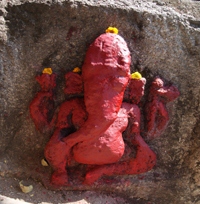 Fig: figures of ganesha Fig: figures of ganesha |
(B) SIVA LINGAS: A good number of rock-cut Siva-lingas of c.11th-12th century CE are lying in the vicinity of the figure of Ganesha near the western gateway in the Nilachal hill.
|
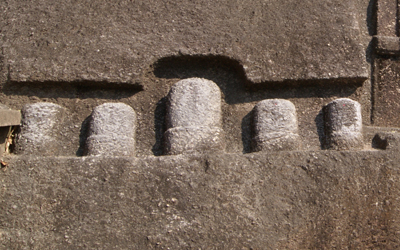 Fig: siva lingas Fig: siva lingas |
(C) BHAIRAVI: A sculpture of Bhairavi is lying near the Kamakhya temple complex.
|
(D) MINIATURE SIKAHARA SHRINES: The miniature sikhara shrines with curvilinear motifs are carved in bas reliefs on a granite outcrop near the western gateway to the Nilachal hill. The sikhara shrines are stylistically similar to Orissan Sikharas and can be dated to circa 12th century CE. A number of architectural members found during the course of scientific clearance are now displayed on masonry pedestals within the complex.
|
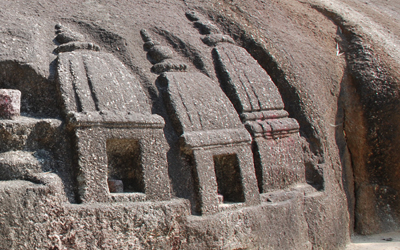 Fig: Miniature sikhara shrines Fig: Miniature sikhara shrines |
(E) FIGURE OF NARAKASURA: Traditionally called this architrave as Narakasur but in reality it is a piece of ceiling slab of an ancient temple. At the center of it a medallion and apsaras or heavenly nymphs are depicted. ‘Narakasura’ was the legendery king of Pragjyotisapura. The decorations on the slab are stylistically dated to circa 11th-12th century CE.
|
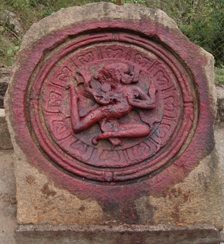 Fig: Naraksur Fig: Naraksur |
(F) DANCING BHAIRAVA, KNOWN AS BALA BHAIRAVA: The rock-cut figure of ‘Dancing Bhairava’ is lying just below the main shrine of Kamakhya. It is also locally known as ‘Bala Bhairava’. The deity, striding on a prostrated corpse is seen outstretching his right leg. A garland of skulls is found bedecked the deity as usual. The style of execution of hair is shown flaring up in dancing posture. The deity holds his usual ayudhas like ankusa, khattanga and kapala and stylistically it is dated to circa 11th-12th century CE.
|
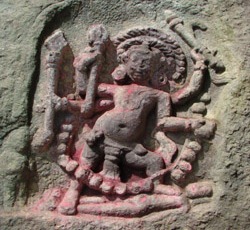 Fig: Dancing Bhairava, known as Bala Bhairava Fig: Dancing Bhairava, known as Bala Bhairava |
(G) SCULPTURE OF BHAIRAVAI: The rock-cut image of Bhairavi can be dated to circa 12th century CE.
|
(H) STONE GATEWAY: A stone gateway leading to the top of the hill lies on the western side of the Nilachal hill. The gateway with a pointed arch possess decorated walls with lotus medallions. On either side of the gateway, figures of lions are carved to guard the gateway. Naranarayana (CE 1540-1584), a celebrated Koch king built the gateway. He is also credited with raising the Kamakhya temple over the ruins of earlier temple.
|
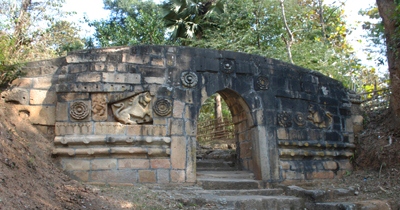 Fig: Stone gateway Fig: Stone gateway |